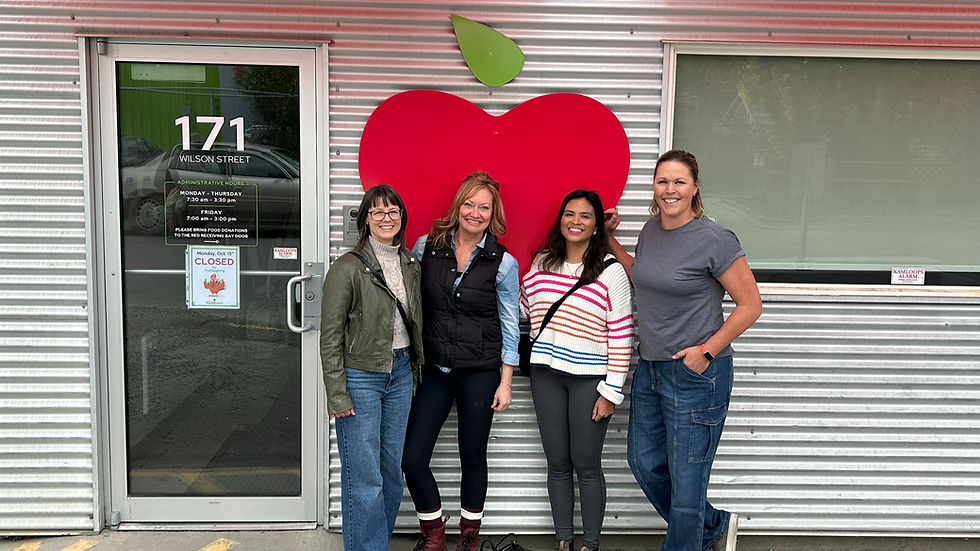9 Steps for a More Successful Delegation
- Amplify Consulting
- Oct 11, 2023
- 4 min read
Updated: Sep 7, 2024

Have you ever contemplated presenting information to your local municipal government on your event or project that supports or impacts the community? Have you ever submitted a request that wasn’t approved and wondered why?
Our team had the pleasure of learning from Sarah Candido, External Relations Liaison with the City of Kamloops regarding this topic. Ms. Candido, who frequently attends Council meetings in her role liaising with local business organizations, walked us through the practical steps of putting together a successful delegation and shared insights on what potentially constitutes an effective delegation presentation.
In this article, we’ll dive into Sarah’s advice and explore how you can put together a great application and presentation for your local government in a way that will best resonate with the community and its leadership.
Research First: embarking on a successful delegation journey takes diligent preparation. Familiarize yourself with your local government’s priorities by delving into their Strategic Plan to ensure that what you plan to present aligns with the overarching vision.
Is a Delegation Right for Your Group: as mentioned, a presentation of your event or project that speaks to the local government’s priorities is paramount but understanding the “why” of a delegation is also vital for municipal governments, like the City of Kamloops, to be able to process delegation requests. If you are not sure if your request would make for a delegation presentation or not, please make sure you review the City’s webpage. At times, a delegation request may not be clear, and you may be contacted by staff seeking additional information. Additionally, it may also be helpful to connect with City staff aligned most closely to what you are planning to present prior to submitting a request. Requests for delegations are less likely to require follow-up questions if staff can see you are already working with the related division or department. Lastly, it’s not appropriate for delegations to ask the Council for money, funding, land, or other requests that would need to be part of a budgetary process. There is a different process for community requests that require a budget.
Attire and Atmosphere Awareness: dressing the part is essential, but the atmosphere holds significance too. Take note of the setting – like the bustling gatherings at Kamloops City Council meetings. Sarah's sage advice is to be professionally dressed but also consider the temperature of the room. Sometimes, there are a lot of people in a smaller space, and it gets hot. Conversely, it can be very cold in Council Chambers depending on the season. Dress appropriately and comfortably, and wear layers to be prepared for any temperature.
In-Person is Preferred: although we are in the digital era, in-person is Sarah’s preference for delegations because it negates the opportunities for technical difficulties and timing delays, plus you build better rapport.
Arrive Early and Prepared: timing and backup plans are your friends. Arrive ahead of schedule, equipped with a copy of your presentation on a USB stick. If you have handouts, talk to Legislative Services staff (the people who will have responded to your delegation request) on how you can best distribute materials.
Be Concise and To-The-Point: we suggest preparing three main points you want to get across and stick to your presentation plan. Master the art of brevity by adhering to requested time constraints. The City of Kamloops, for example, has a 10-slide and 10-minute limit. Use visually engaging slides, clear infographics, graphics, and images instead text. If one can read an entire presentation from its slides, it’s difficult for the presenter to actually add value!
Navigate Last-Minute Changes: sometimes, the best-laid plans encounter unexpected twists. If your delegation's schedule undergoes a shuffle due to an urgent matter, don't hesitate to work with Legislative Services to find a new date and time to present. If your project or event has a deadline, please make sure that is clearly communicated in the delegation request.
Be Ready for Questions: you’ve shared your presentation, now be ready for questions from local government leaders! Being ready for questions and answering them well will help you build a greater connection and understanding of your work with local government elected leaders, as well as the government staff and community members in the room or watching online. In addition to the Council’s strategic plan, potential delegations may want to do some research into what questions may be asked after a presentation, based on the topic, by looking at past delegations in the same field. Alternatively, if research isn’t an option, watch live Council meetings prior to your delegation date to get a better sense of questions that arise at Council and help you prepare a succinct response.
Have a Call to Action: finish your presentation by ensuring you have a clear call to action, whether it’s extending an open invitation for future engagement or inviting people to an event or tour. Express your willingness to reconnect in the future, offering a gateway for collaboration. Please remember delegations are not for promotional purposes of for-profit businesses but are to share community information.

As an organizational leader, presenting to local government as a delegation can be a part of an effective communications strategy. It adds a personal touch, putting real faces to your cause. This approach humanizes your goals, making them relatable to local government, which may help garner support and foster positive change within the community.
For comprehensive protocol tips and to review the City of Kamloops’ delegation request requirements, visit the City of Kamloops website: https://www.kamloops.ca/city-hall/city-council/engage-staff-council/delegations.








Comments